The Virgin Spring
8 /10 1 Votes
Duration Country Sweden | 8/10 IMDb Genre Drama | |||||||||||||||||||||||||||||||||
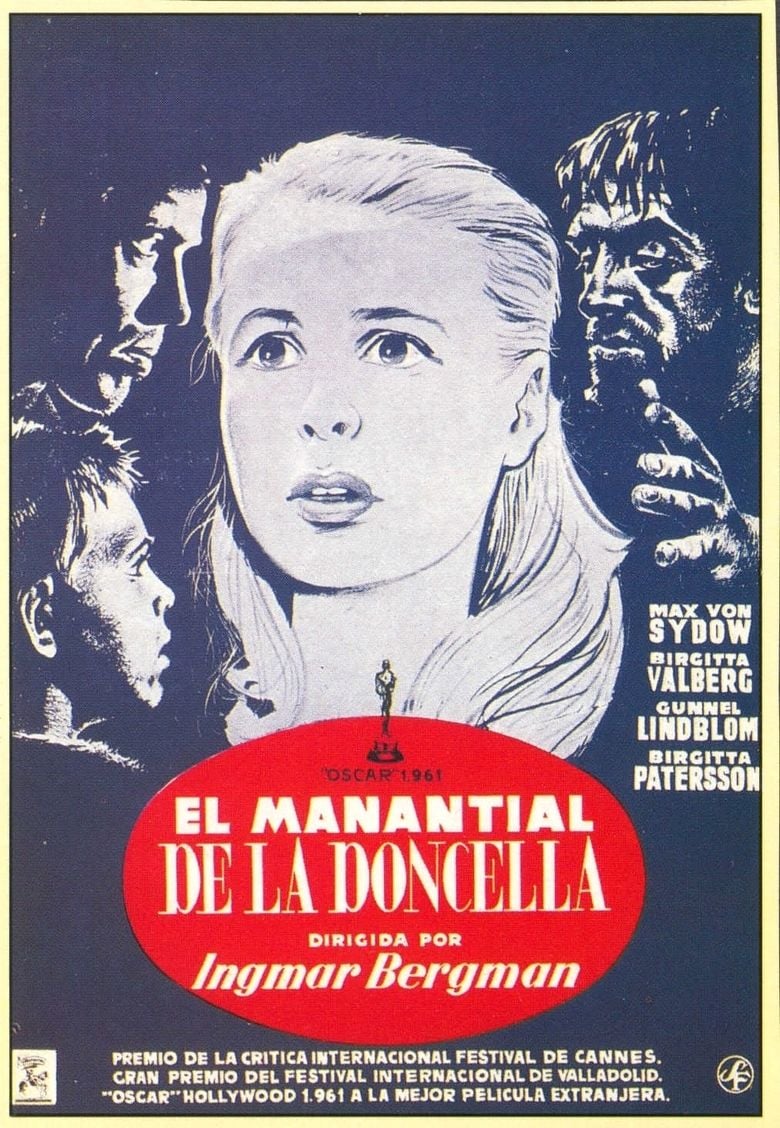 | ||||||||||||||||||||||||||||||||||
Release date 8 February 1960 (1960-02-08) Cast (Töre), (Märeta), (Ingeri), (Karin), (Thin Herdsman), (Beggar) Similar movies Deadbeat , Mad Max: Fury Road , John Wick , Taken 3 , Furious 7 , Salt | ||||||||||||||||||||||||||||||||||
The Virgin Spring (Swedish: Jungfrukällan) is a 1960 Swedish film directed by Ingmar Bergman. Set in medieval Sweden, it is a rape and revenge tale about a father's merciless response to the rape and murder of his young daughter. The story was adapted by screenwriter Ulla Isaksson from a 13th-century Swedish ballad, "Töres döttrar i Wänge" ("Töre's daughters in Vänge"). The film contains a number of themes that question morals, vengeance, and religious beliefs.
Contents
- Ang lee on ingmar bergman s the virgin spring
- Plot
- Themes
- Development
- Filming
- Release
- Critical reception
- Accolades
- References
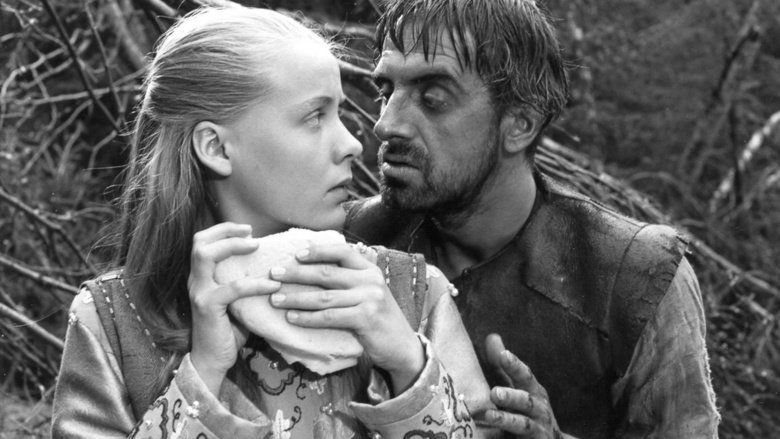
The film won the Academy Award for Best Foreign Language Film at the 1961 Academy Awards and other honours. It was also the basis for the 1972 exploitation horror film The Last House on the Left.
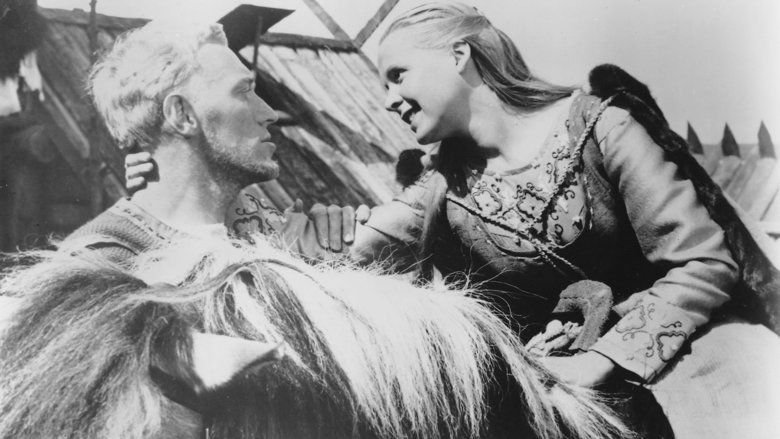
Ang lee on ingmar bergman s the virgin spring
Plot
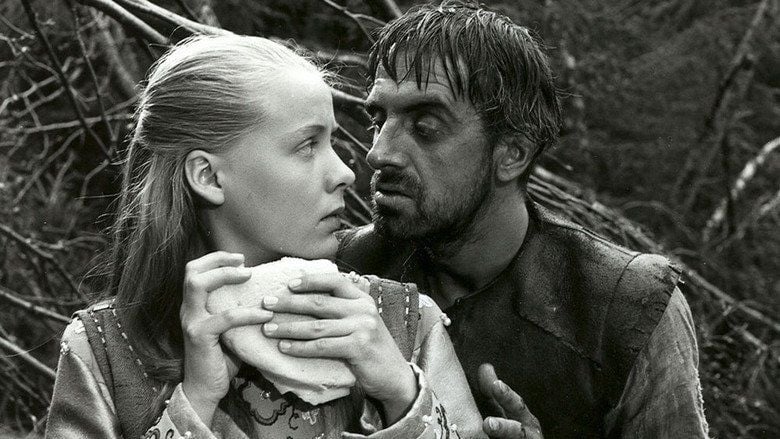
In medieval Sweden, prosperous Christian Per Töre sends his daughter, Karin, to take candles to the church. Karin is accompanied by her pregnant servant Ingeri, who secretly worships the Norse deity Odin. Along their way through the forest on horseback, Ingeri becomes frightened when they come to a stream-side mill and the two part and Karin sets out on her own.
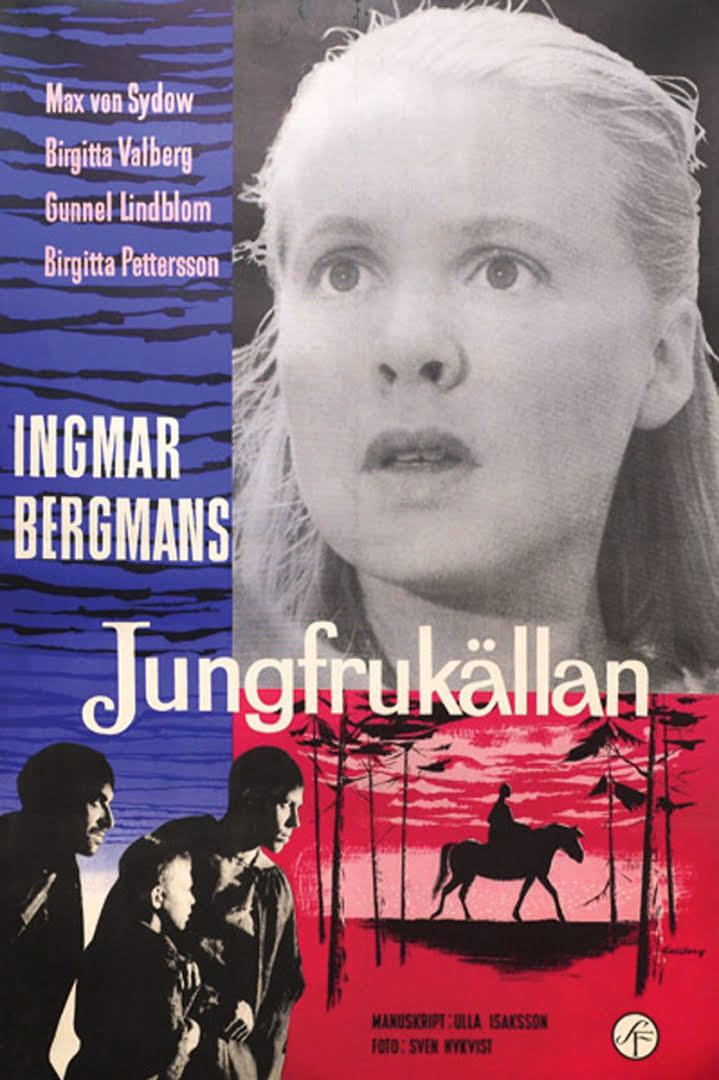
Ingeri encounters a one-eyed man at the stream-side mill. When Ingeri asks about his name he enigmatically responds he has none "in these days". The man tells Ingeri that he can see and hear things others can not. When the man makes sexual advances towards her and promises her power, Ingeri flees in terror. Meanwhile, Karin meets three herdsmen, two men and a boy, and invites them to eat her lunch with her. Eventually, the two older men rape and murder Karin while Ingeri watches, hidden, from a distance. The two older men then leave the scene with Karin's clothing. The younger boy is left with the body and to watch the goats, but he takes the situation poorly and quickly becomes sick with guilt.

The herders then, unknowingly, seek shelter at the home of the murdered girl. Her parents discover that the goat herders murdered their daughter when the goat herders offer to sell Karin's clothes to her mother. After they fall asleep, the mother locks the trio in the chamber. Ingeri returns to the farm and breaks down in front of Töre. She tells him about the rape and confesses that she secretly wished for Karin's death out of jealousy. In a rage, Töre stabs one of the herders to death with a butcher knife before killing the other two with his bare hands.
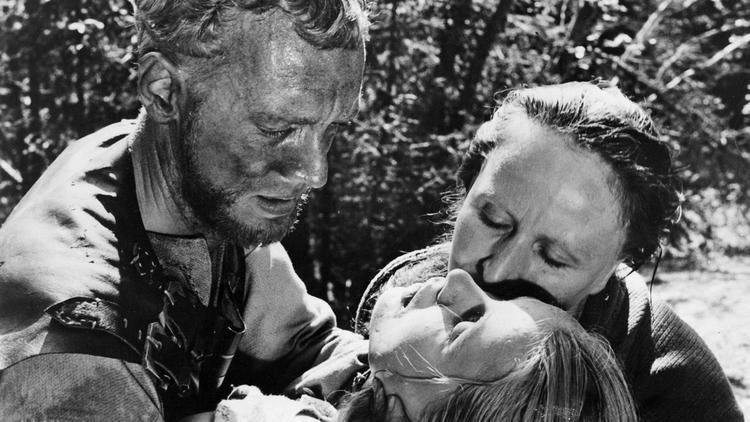
That same day, the parents set out to find their daughter's body with the help of Ingeri. Töre vows that, although he cannot understand why God would allow such a thing to happen, he will build a church at the site of his daughter's death. As her parents lift her head from the ground, a spring begins to flow from where she was lying. Ingeri then begins to wash herself with the water and Karin's parents clean their daughter's muddied face.
Themes
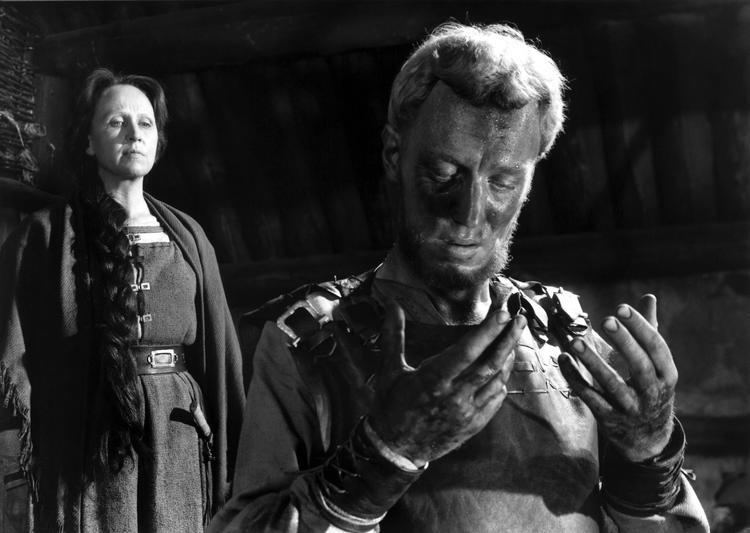
A variety of themes explored in the film include Christianity, Paganism, Norse mythology, feelings of guilt, vengeance, the questioning of religious faith and sexual innocence. All of the characters struggle with feelings of guilt, Ingeri for praying to Odin and standing by during the murder, Märeta for disliking Töre and wanting to be Karin's favourite parent, and Töre for killing the boy and possible feelings of incest towards Karin.
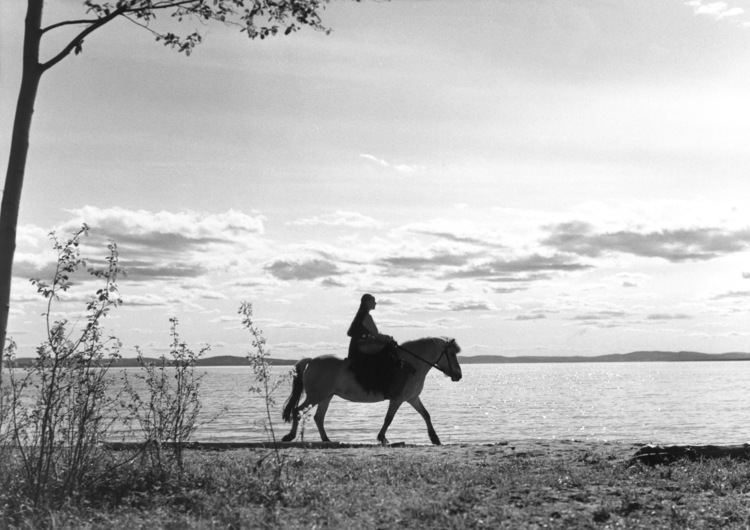
Much of the religious themes centre on conflict between paganism and Christianity, recalling the misery Sweden experienced as the two religions struggled for predominance. In the film, paganism is associated with magic spells, envy and revenge. In a possible interpretation, Odin in this film becomes synonymous with the Devil. As with The Seventh Seal, Bergman relies on the emotions and inner conflicts of his characters, played by Max von Sydow, to represent spiritual crisis. Töre, played by von Sydow, loses his Christian values to commit the act of revenge, and offers to build a church as redemption.

Consistent with fairy tales, Karin and Ingeri are presented as opposites, Karin as an innocent virgin who always appears clean and in fine clothing. In contrast, Ingeri is dirty, dark in complexion, rides a darker horse, and her pregnancy indicates compromised innocence. The rape scene represents Karin losing her innocence, with her appearance after being disordered. Screenwriter Ulla Isaksson viewed the spring as symbolizing Karin's innocence. Ingeri uses it to wash her head, which she used to plan the spell, and her eyes, which she used to watch the rape, and drinks the water, symbolizing absolution.
Development
Director Ingmar Bergman first read about the legend of Per Töre, who had seven daughters who fell victim to seven rapists, as a student, and felt it was ideal for adaptation. He had proposed it as a ballet for the Royal Swedish Opera or as a play, but decided a film would be most suitable while making Wild Strawberries. For adaptation, Bergman chose "Töres döttrar i Wänge" as among the simplest of the ballads about Töre.
New influences came from Japanese cinema, with Bergman particularly being a fan of Rashomon (1950). He later referred to The Virgin Spring as "a wretched imitation of Kurosawa." For a screenwriter, Bergman chose novelist Ulla Isaksson. Isaksson had written a novel set in Medieval times and was acclaimed for its realism, which Bergman felt might prevent repeat of some criticisms of his 1957 film The Seventh Seal. In writing the screenplay, Isaksson was most interested in exploring conflicts between Christianity and paganism, while Bergman wanted to dissect guilt.
Filming
By the time The Virgin Spring began production, Bergman's relationship with his usual cinematographer Gunnar Fischer was strained, due to Bergman's abrasiveness. When Fischer found another project to work on, Bergman replaced him with Sven Nykvist, who became his regular collaborator.
Bergman said that in filming the rape scene:
Release
The film premiered in Stockholm on 8 February 1960, where 15 audience members walked out during the screening, and several left weeping. Although SF Studios accountants previously often faulted Bergman films as unprofitable, they acknowledged The Virgin Spring was a success. The film was also screened at the Cannes Film Festival in May 1960.
In the United States, The Virgin Spring opened in New York City on 14 November 1960, censored to remove shots where Karin's naked legs are taken around the body of the rapist. In Fort Worth, Texas, the film was banned as obscene, and the Texas Supreme Court declined to hear the case. The Criterion Collection released the film on DVD in Region 1 in January 2006.
Critical reception
The film received mixed reviews in Sweden, with Svenska Dagbladet publishing a review stating "It hits home like a fist between the eyes." In contrast, the Stockholms-Tidningen wrote Isaksson was better suited for print than film, where she was weak. Aftonbladet's review called it "somewhat loose in execution."
There was some controversy among U.S. critics. In a 1960 review, Bosley Crowther wrote, "Mr. Bergman has stocked it with scenes of brutality that, for sheer unrestrained realism, may leave one sickened and stunned. As much as they may contribute to the forcefulness of the theme, they tend to disturb the senses out of proportion to the dramatic good they do." Stanley Kauffmann wrote that "The vengeance scene is so long that it verges on the ridiculous." Dwight Macdonald questioned why God would create a spring instead of resurrecting Karin.
In 2011, author Alexandra Heller-Nicholas wrote The Virgin Spring gave "a relatively auspicious heritage" to rape and revenge films, and was "an art classic" with "sumptuous black and white cinematography," and that the reuse of the story in The Last House on the Left (1972) indicated "remarkable longevity" for the plot. Robin Wood wrote, "The Virgin Spring is Art; Last House is Exploitation." Leonard Maltin, giving The Virgin Spring three stars in his 2013 Movie Guide and calling it "Fascinating, beautifully made," felt it was more proper to say The Last House on the Left "ripped off" Bergman's film than remade it.
The aggregation site They Shoot Pictures, Don't They has found it to be the 639th most acclaimed film ever made. Rotten Tomatoes, a review aggregator, also reports 94% approval among 16 surveyed critics, with an average rating of 8.1/10.
Accolades
The film won the Academy Award for Best Foreign Language Film, marking the first time Bergman won the award. The film was also entered into competition for the Palme d'Or at the 1960 Cannes Film Festival.
References
The Virgin Spring WikipediaThe Virgin Spring IMDb The Virgin Spring themoviedb.org
